In this article, we will outline the first Windward Leg for Beginners with lots of links for more information. If there’s something else that want to understand, just type some keywords in the search box at the top of the page and we’ll show you what else we have on the topic.
This article continues where Sailing the Race Course – Starting for Beginners left off.
This series of articles introduces the key concepts of sailing a race from preparation to the starting sequence, buoy roundings and finishing. The target audience for this information is sailors that may have never competed in a formal race environment or want to better understand what is going on during a race. The target could also include someone who spectates and wants to better comprehend what is happening. Throughout, we will link to more advanced information, but the body of the article will be the basics. We will not go into rules details, but will mention rule areas that pertain to various situations, for further study. If we missed a basic concept, feel free to comment below. There will be links to lots of articles for more information throughout.
Windward Leg Overview Diagram
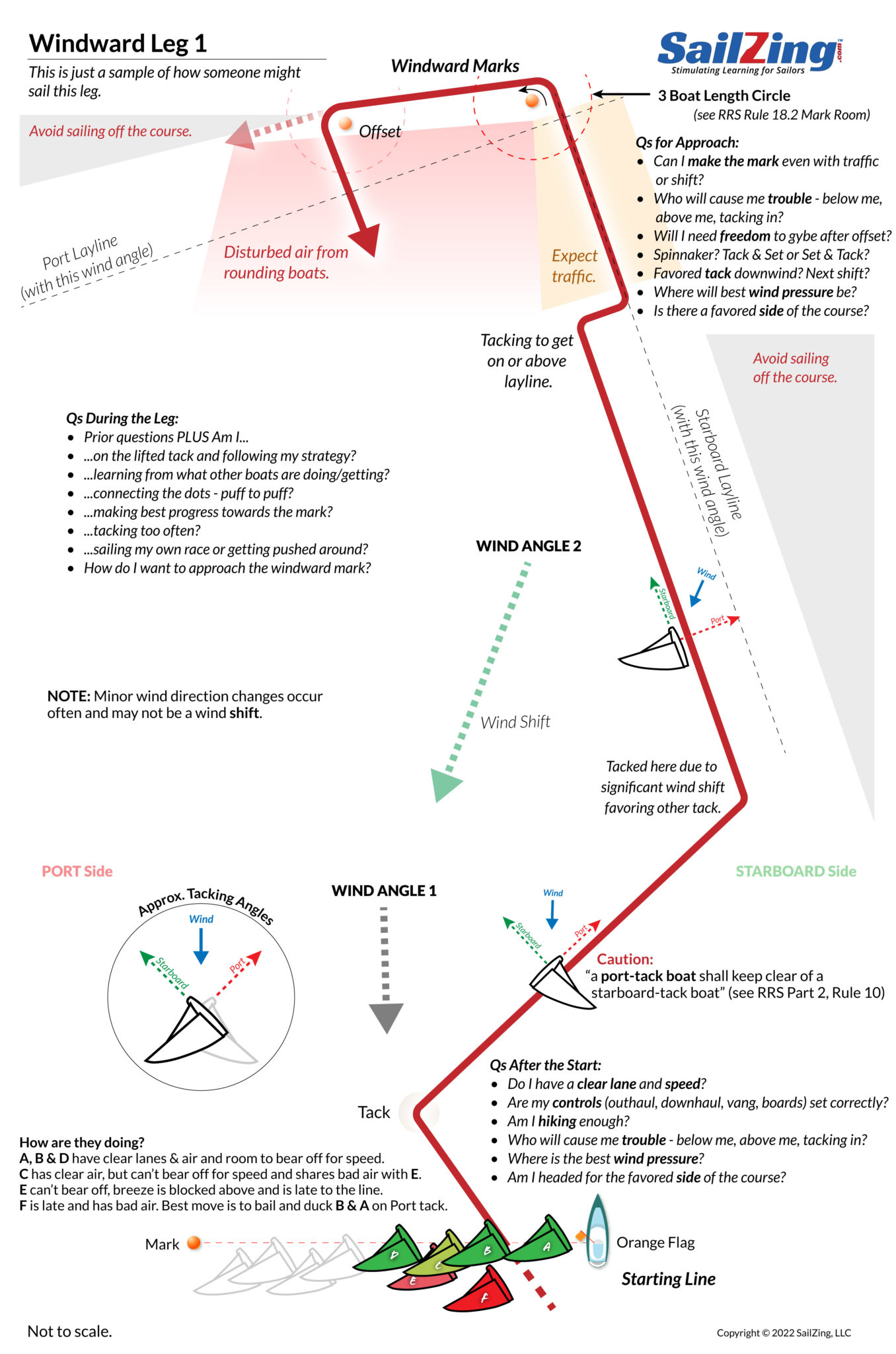
Olympic sailors, Stephanie Roble and Maggie Shea presented some amazing thoughts on racing strategy in partnership with the ILYA and SailZing.com in a series of webinars. You might want to watch their Racing Strategy webinar for some great ideas and examples.
After The Start – 1st Third
The starting gun has gone off and you’re on the move. How is it going? Here are some things that you need to be in your mind.
- Do I have a clear lane and speed? If you have room below, bear off (bow down) and accelerate. It’s critical to keep your bow in front of, or at least equal to, the boat to windward of you to keep clear air. Bad start? Click here for some options.
- Are my controls (outhaul, downhaul, vang, traveler) and board(s) set correctly prior to the start?
- Am I hiking enough? If there is enough breeze, hike hard and keep the boat on its lines and driving forward for the gun. This is no time to heel excessively.
- Who will cause me trouble – below me, above me, crossing? Watch for boats that will make trouble for you and keep them out of your way. Cross, tack or duck?
- Where is the best wind pressure? Starting in the best breeze, on the favored tack is priceless.
- Am I headed for the favored side of the course? Moving fast in the wrong direction is usually not helpful.
As this 1st third of the Windward Leg for Beginners plays out, you’re trying to position yourself for being on the favored tack for the longest tack to the windward mark, while avoiding boats that want your air or will push you off your strategy.
What is Favored?
Favored Tack – Generally, this is the tack that will take you most directly to where you want to go.
Favored Side of the Course – Generally, this is the side that enables the favored tack longest, and preferably, the best wind pressure.
You need to know your tacking angles for your boat type to know if you’re on the favored tack. It’s also critical for assessing lay lines.

Dave Dellenbaugh’s Speed & Smarts has a great article (used with author’s permission) on creating your own tacking lines for your type of boat. Tacking angles vary by the type of boat, so get to know your optimal tacking angles. It can be a bit complicated, so you could also just ask the best sailor that you find in your boat class.
So, how do you think about which side is favored? We have an article for that.
Favored Side of the Course: Make Better Decisions
Making Moves – 2nd Third
In the 2nd third of the Windward Leg for Beginners, this is where you ask yourself, am I…
- on the lifted tack and following my strategy from Starting Prep? Sometimes, the start can leave you “off your game”. Settle down and focus on sailing faster and smarter, in keeping with your strategy.
- observing and learning from what other boats are doing/getting and new breeze? What can you learn from competitors’ tacking angles around you? Is the boat a bit to windward in a different breeze with a better angle? Are you as fast as other boats near you? Are competitors lining up to create a traffic problem for you?
- connecting the dots – puff to puff? Am I taking advantage of the best pressure? How do I take advantage of puffs?
- making best progress (VMG) towards the mark? Are you sailing fast and on the wind (review modes)? Should you bear off (point down, foot) to gain speed to get to the next shift faster or point up (pinch) to stay in the breeze?
- tacking too often? Tacks generally cost you, so use them sparingly. Also, excessive tacking can distract you from sailing fast.
- sailing my own race or getting pushed around? If you find that you’re repeatedly tacking because of other boats or can’t go where you want to go because you’re blocked, then you aren’t sailing your own race. Here is an article that covers Ducking or Tacking decisions.
- getting in the right spot to approach the windward mark?
- Try to keep your Head out of the Boat. Don’t get tunnel vision, keep paying attention to what’s happening around you – new wind, puffs, another boat on a better tack, where are the marks…
Ladder Rungs
Take some time to think about the concept of “ladder rungs” to better understand race course leverage. We have an article and accompanying video that convers the topic.
Ladder Rungs: Understand the Race Course with a Visual Approach
Rounding the Windward Marks – Final Third
So you made it to the final third of the Windward Leg for Beginners. What do you need to think about to maintain or gain on other boats while preparing for a strong downwind leg?
Windward Mark Rounding – Summary Diagram
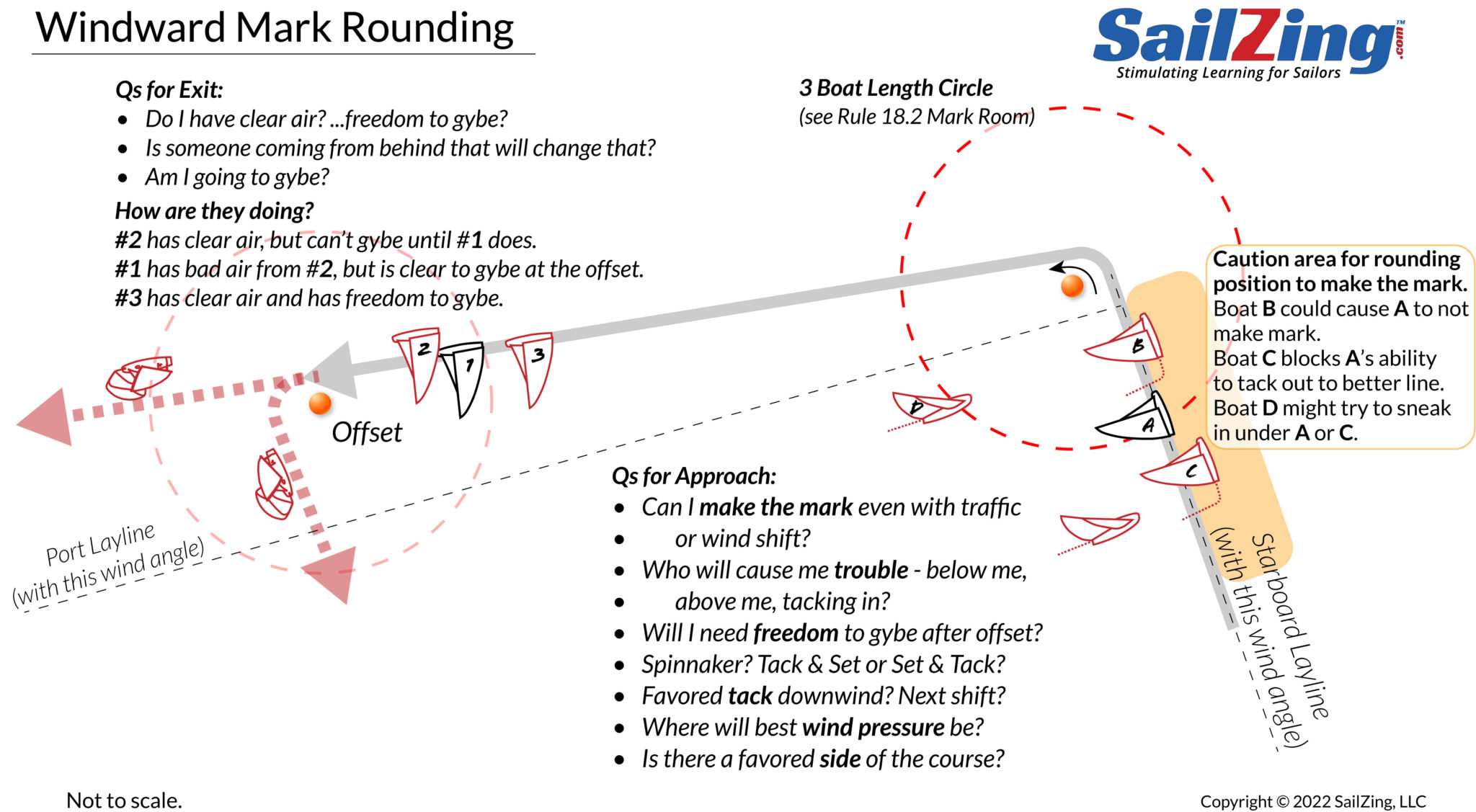
Questions for the Approach
- When do I tack for the lay line (line that will take me to the mark and will allow me to round it cleanly)? We wrote an article on this topic that could help.
- As I get closer to the mark, can I lay the mark (get around it) regardless of traffic or a wind shift? Especially at the 1st windward mark rounding, there will likely be traffic. Let’s say that you tacked on the starboard layline six boat lengths out are are looking good to round the mark, but then a boat Lee Bows you and another crosses and tacks to windward on your bow. Now you are having trouble keeping your line to the mark. Anticipate this by either tacking on the layline closer and a bit higher, or by making sure that you can take a hitch to windward if you get in a jam. Rules “In The Zone” (see RRS 18.2 & 18.3)
- What are my rights coming in to the mark? We have several articles with animations describing rules when boats meet and with respect to marks. …and what if I tack in the zone?
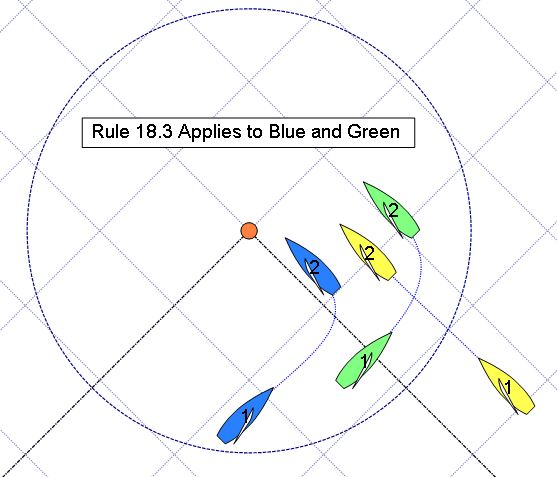
- Who will cause me trouble – below me, above me, by tacking in? Pay attention to how the traffic is stacking up and watch for competitors positioning to cause you trouble to give yourself time and space to put yourself in a good position.
- Will I need freedom to gybe after offset? If you plan to gybe at the offset mark (assuming that you’ve thought about it), will you have the freedom to do so? If you let a boat get below you before the offset, they can trap you from gybing. If you plan ahead, you can slow down or navigate to prevent this.
- Will you be flying a chute/kite/spinnaker? Tack / Set or Set / Tack? You and your crew need to be on the same page about how you will approach the downwind leg. If you have a chute, will you gybe and then set the chute (spinnaker/kite) or set the chute and then gybe?
- Favored tack downwind? Next shift? Typically, the favored tack is the opposite of the last favored tack upwind – if starboard, then port will be favored downwind. If you were nearing when the next shift should occur, then you might stay on your tack at the offset.
- Where will the best wind pressure be? You want to sail in the best breeze. Do you know where you think that will be? Is the wind pressure difference big enough that you should sail the unfavored tack for a while to get into it?
- Is there a favored side of the course? Is there a side of the course with better wind pressure and will set you up on the favored tack longest and/or will best set you up for the leeward marks?
Questions for Exiting the Marks
In addition to the questions above, as you’re getting ready to round the offset, you need to be well aware of the boats around you that might limit your options and work to set yourself up with the freedom to follow YOUR plan.
We have a good summary checklist for approaching the Windward Mark.
Windward Mark Preparation Checklist
Conclusion
Well, especially for beginners, that is a lot to think about. The truth is, you can’t think about all of it. Begin with focusing on getting/having clear air and being on the favored tack. Having a decent start helps, but having an awesome start is essential to improving your first windward legs. A bad start is like carrying a rock with you while walking uphill. It’s not helpful. Finally, knowing how to approach the windward marks with a plan for the mark exit is critical to finishing the windward leg strong.
We hope that Windward Leg for Beginners helps you to think about the first leg and provides easy access to more opportunities to learn. If you haven’t read our prior article Starting for Beginners, check it out. SailZing.com has plenty of free articles and videos, some simple and some more complex, for you to use along your journey. Below, we’ve listed a few of them. Enjoy!
Related Content for Windward Leg for Beginners
SailZing.com Category Full of Articles: Upwind Strategy & Tactics
Execute the Start with Four Key Skills – SailZing
Upwind Tactics With Roble / Shea Sailing
Recognizing the Lifted Tack – Cues to Use and Traps to Avoid
Cross, Tack, or Duck? Ask the Right Questions
Simplified Tacking Lines for Better Judgments
Favored Side of the Course: Make Better Decisions
Windward Mark Laylines: Get them Right
Sail the Long Tack: Part of Your Strategy Mix
Upwind Strategy Skills Checklist: Master These to Win

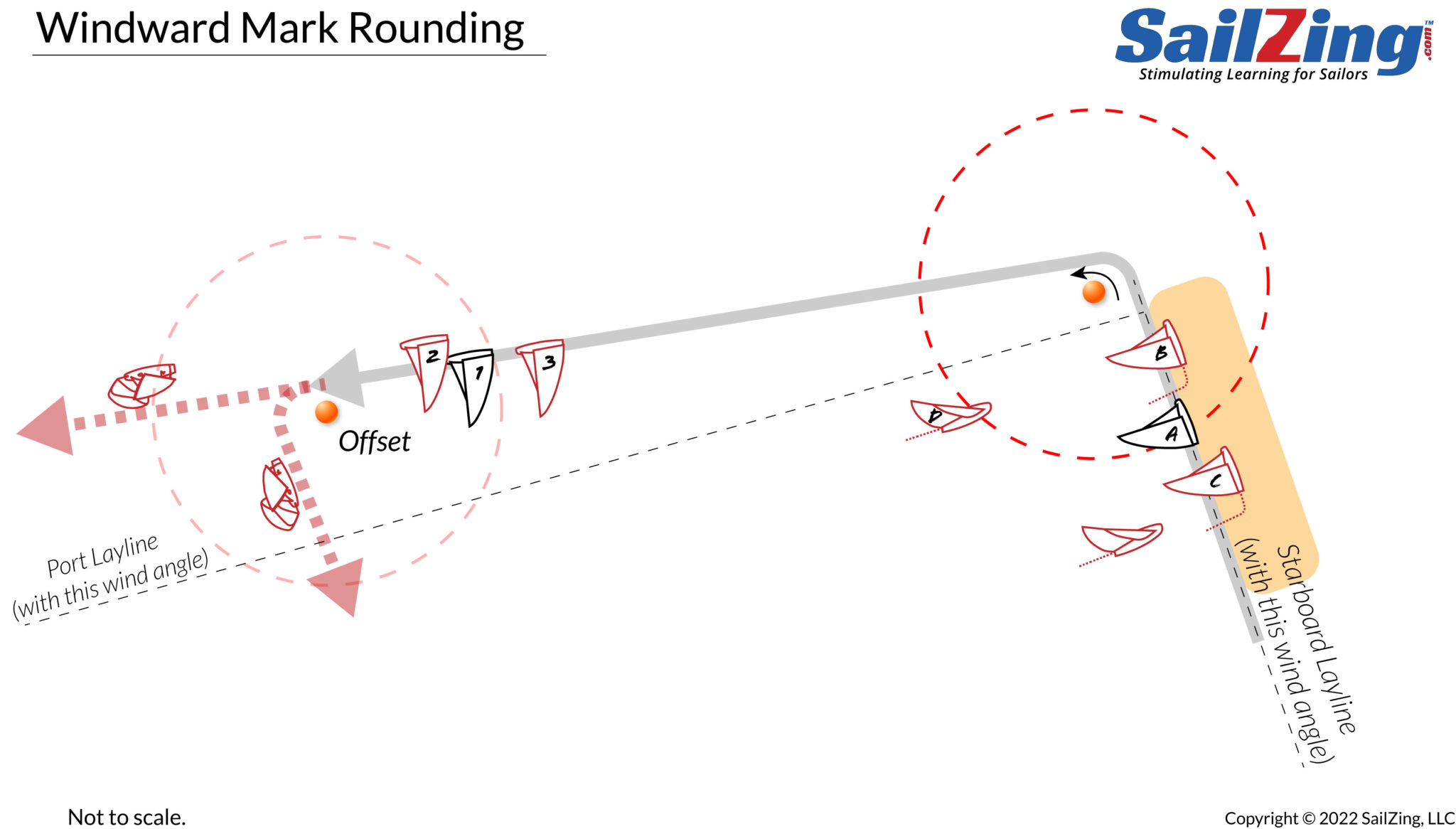

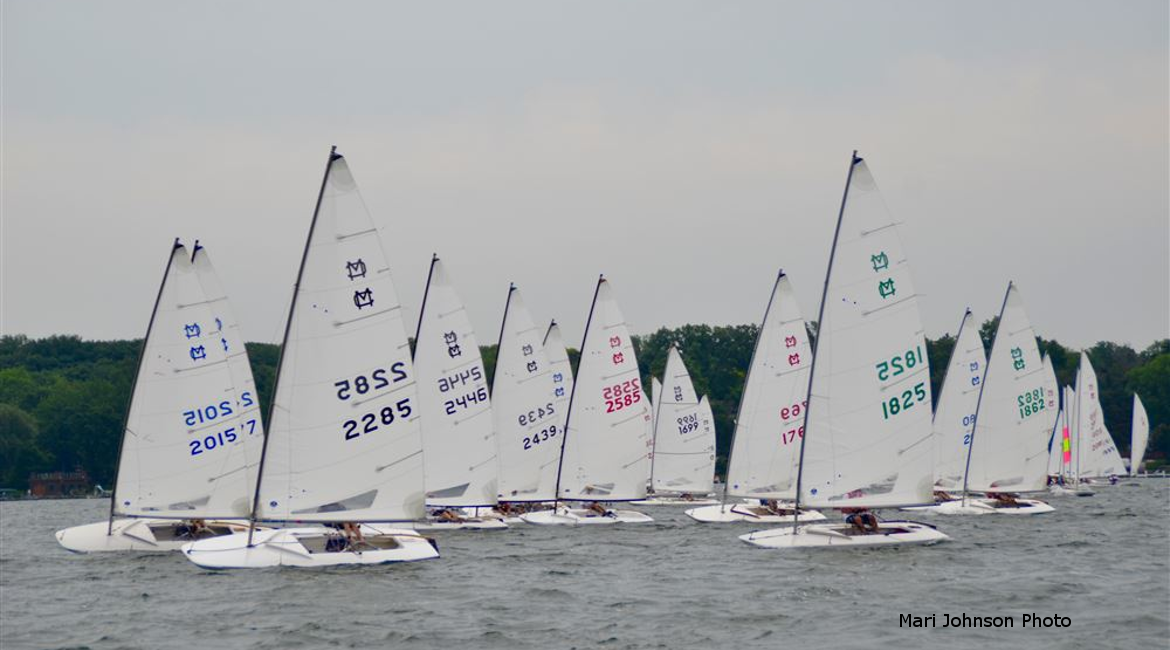
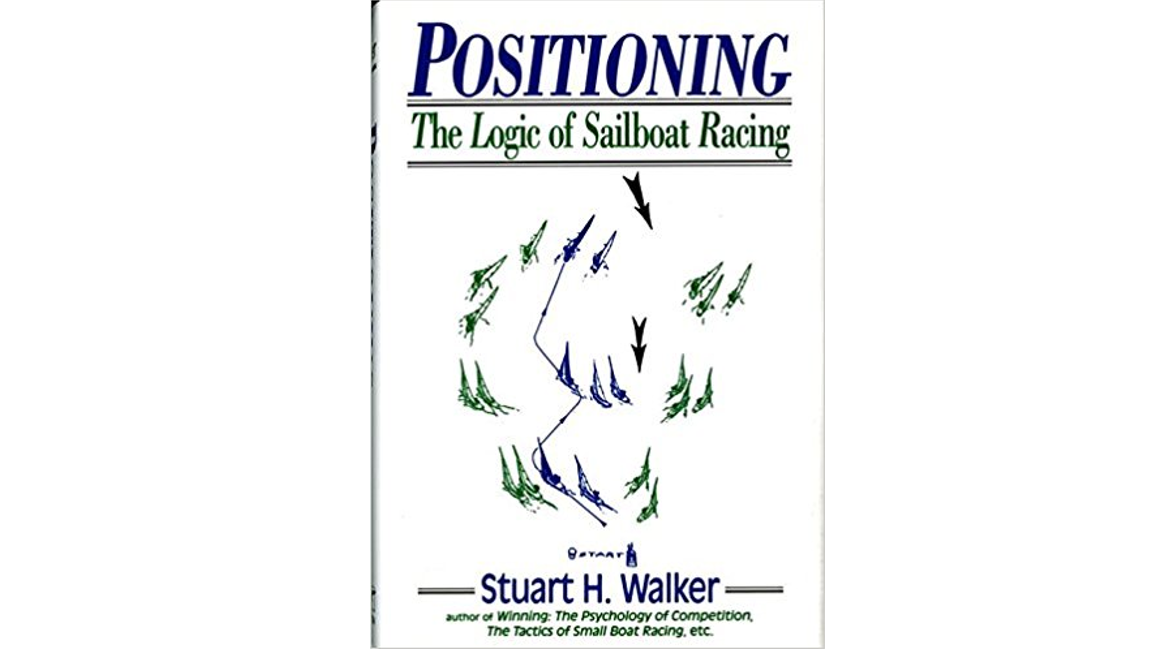

Hey Rob, what about the zone around the offset?
Excellent point! I’ll add it to the diagram.